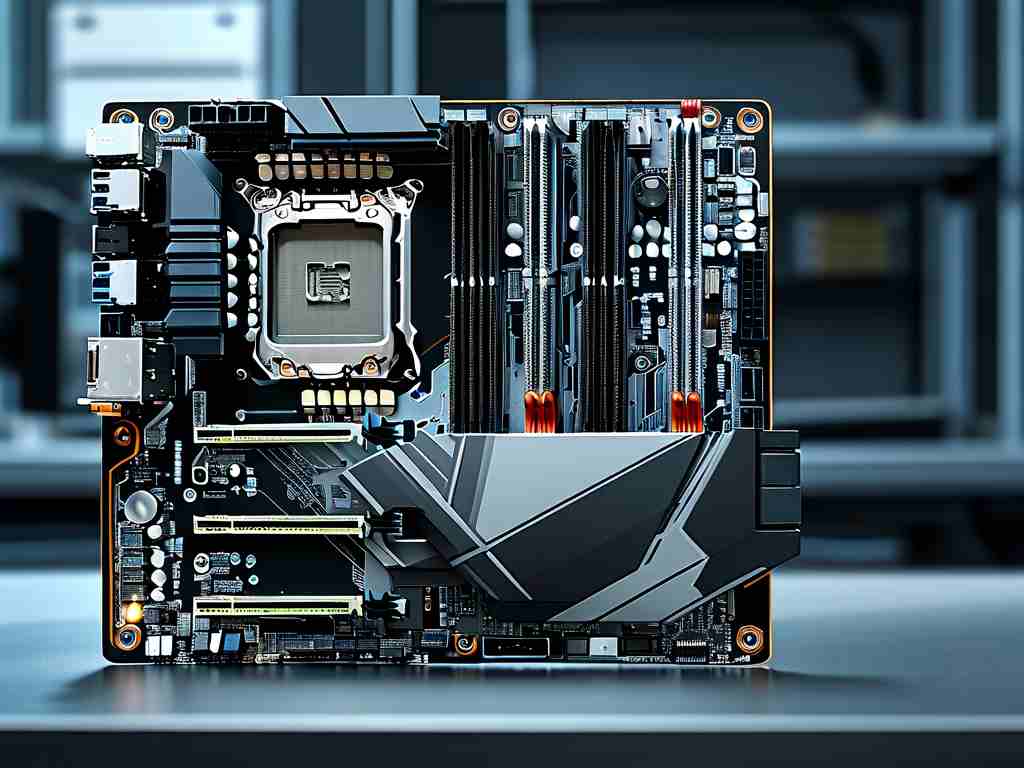Understanding how your computer's motherboard and memory (RAM) interact is fundamental to building or upgrading a stable, high-performance PC. It's not as simple as just buying the fastest or largest capacity RAM kit available; compatibility is king. Neglecting this critical pairing can lead to frustrating issues like failure to boot, system instability, crashes, or severely underutilized hardware potential. This guide delves into the essential factors determining motherboard and RAM compatibility, empowering you to make informed decisions.

The most fundamental compatibility layer is the Memory Generation (DDR Standard). Motherboards are designed to support a specific DDR generation: DDR3, DDR4, or the latest DDR5. These generations are physically and electrically incompatible. A DDR4 module will not fit into a DDR3 slot, and attempting to force it can damage both the RAM and the motherboard. Conversely, a DDR5 module won't function in a DDR4 slot. The motherboard's specifications will explicitly state the supported DDR generation. The physical differences are evident in the notch position on the RAM module's connector (keying) and the number of pins (e.g., DDR4 has 288 pins, DDR5 has 288 pins but a different key notch location).
Beyond the generation, the Motherboard's Physical RAM Slots (DIMM Slots) impose physical constraints. The number of slots determines the maximum number of RAM modules you can install. More importantly, motherboards support a Maximum RAM Capacity. This is the total amount of memory the motherboard's memory controller and chipset can address. Exceeding this limit means the extra RAM won't be recognized or utilized. For instance, a board might support "up to 64GB DDR4" across its four slots. Installing 4x16GB modules (totaling 64GB) would be compatible, but 4x32GB modules (128GB) would exceed the limit and likely fail.
Channel Architecture plays a crucial role in performance. Modern motherboards support dual-channel, triple-channel (less common now), or quad-channel memory configurations. This allows the memory controller to access multiple RAM modules simultaneously, significantly increasing bandwidth. To leverage this, RAM modules must be installed in the correct slots as specified in the motherboard manual. Typically, this involves populating slots of the same color. For dual-channel, this usually means installing two identical modules in slots A2 and B2 (or sometimes A1 and B1, but always check the manual). Using mismatched modules or incorrect slot placement often forces the system into slower single-channel mode.
RAM Speed (Frequency) is measured in MHz (e.g., DDR4-3200, DDR5-6000). While RAM modules advertise their rated speed, the motherboard specifies both the Supported Memory Types (the DDR generation) and the Supported Memory Speeds. The motherboard will list a range of officially supported speeds (e.g., 2133MHz to 4400MHz+ OC for DDR4). Installing RAM faster than the motherboard's maximum officially supported speed might require enabling XMP (Intel Extreme Memory Profile) or EXPO (AMD Extended Profiles for Overclocking) in the BIOS. These profiles are pre-configured overclocking settings stored on the RAM itself, allowing it to run at its advertised speed beyond the base JEDEC standard (e.g., 2133MHz or 4800MHz for DDR5). However, achieving these speeds isn't guaranteed and depends heavily on the motherboard's design and the CPU's integrated memory controller (IMC) quality. Not all motherboards support very high overclocked speeds reliably. If XMP/EXPO is unstable, the system might default to the slower JEDEC speed.
Voltage Requirements must also align. Different DDR generations and specific high-performance RAM kits operate at different voltages (e.g., DDR4 JEDEC is typically 1.2V, while DDR5 is 1.1V). High-performance kits might require 1.35V or more for XMP/EXPO profiles. The motherboard must be capable of supplying the required voltage stably through its voltage regulation modules (VRMs) dedicated to the RAM. Using RAM that demands voltage beyond the motherboard's safe capacity can damage components.
The most reliable resource for compatibility is the motherboard manufacturer's QVL (Qualified Vendors List). This is a list of specific RAM kits (brand, model number, capacity, speed, timings) that the motherboard manufacturer has physically tested and verified to work correctly with that specific motherboard model at the advertised speeds (often with XMP/EXPO enabled). While RAM kits not on the QVL can work, consulting the QVL significantly reduces the risk of compatibility headaches, especially when pushing high speeds or capacities.
For example, encountering a scenario where a user purchases a high-speed DDR4-4000 kit for a mid-range motherboard only to find the system won't boot with XMP enabled is common. The solution often involves checking the QVL – the board might only reliably support up to DDR4-3600. Manually configuring the RAM to run at 3600MHz with slightly looser timings in the BIOS might resolve the instability.
In , achieving seamless motherboard and RAM compatibility requires careful attention to the DDR generation, physical slot constraints, maximum capacity, channel configuration requirements, supported speed ranges (and the role of XMP/EXPO), voltage matching, and diligent consultation of the motherboard's QVL. Overlooking any of these factors can transform an exciting upgrade into a troubleshooting nightmare. By prioritizing compatibility based on your specific motherboard's specifications and verified QVL listings, you ensure a stable foundation and unlock the full performance potential of your system's memory.

